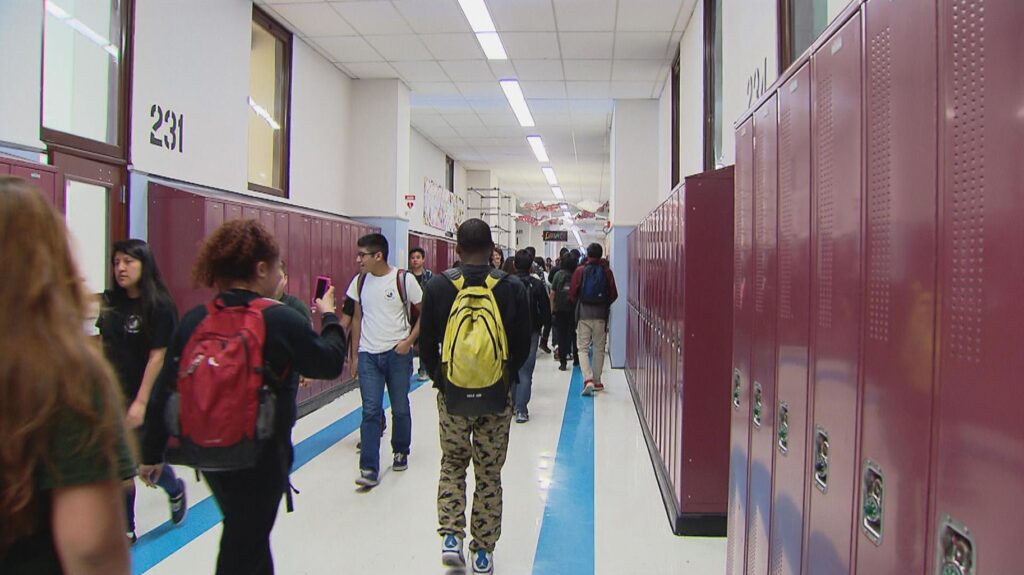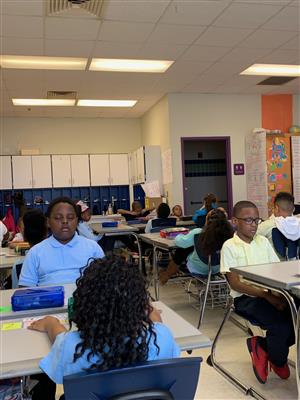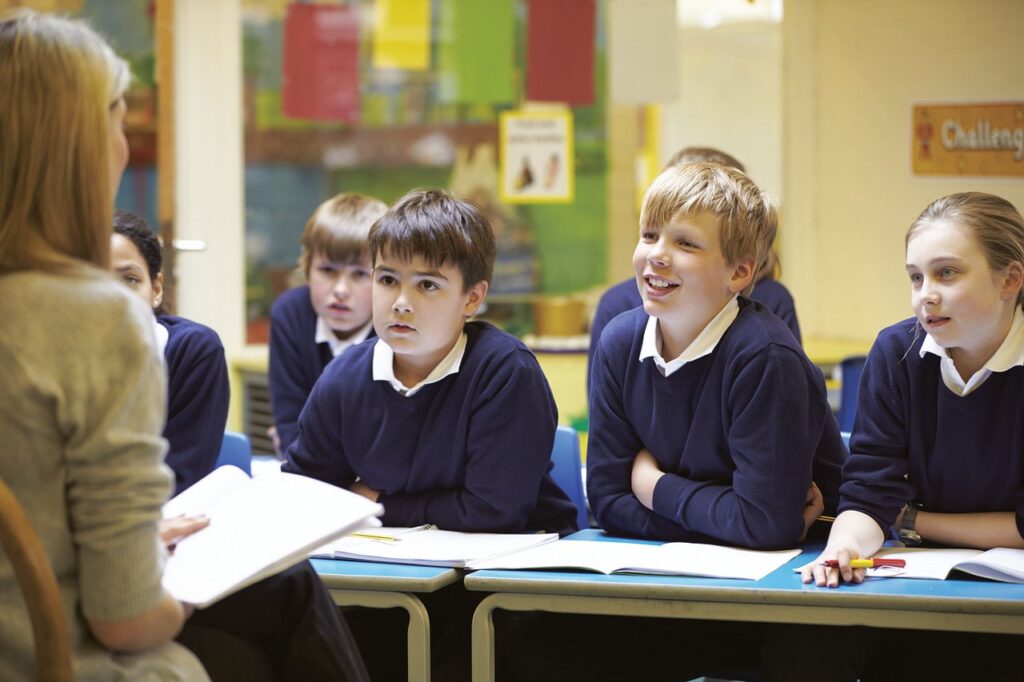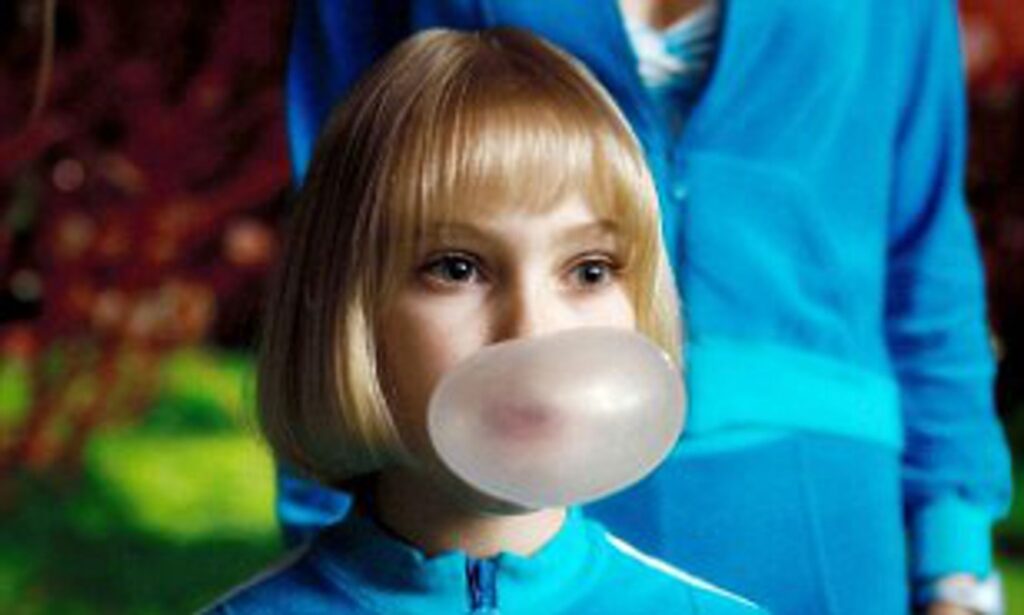By James Rossi, Classroom Coordinator
“I do not teach anyone, I only provide the environment in which they can learn” – Albert Einstein.
I saw that quote for the first time recently, and I laughed to myself because for years I have been telling my students that I cannot teach them anything. My job is to build the place they want to learn, and to put things in front of them that make them want to know more and understand. My role is to guide them in becoming better humans.
Environment influences Outcome. Environment includes everything that engages one of your senses, everything that enters your body in any form. Luckily, as conscious beings, we can manipulate our environment to our own ends. When we influence Environment, we influence Outcome.
“The law of nature is, do the thing and you shall have the power; but they who do not the thing have not the power.”
Ralph Waldo Emerson
I’m just a teacher. Why should I be thinking about environments and outcomes?

In the context of our students, we as educators have the ability to design an environment that will influence student outcomes. We can give our students the place that helps them become better. This is not to say that by making a pretty classroom your students will perform better. This is to say that by being consciously aware of all the sensory inputs, and why they are present, we can put together the pieces that give our students the greatest advantage. We shape them, not directly, but indirectly in this way.
So, what does this all actually mean? Do I still have to teach if I make the right kind of room? Yes. But now you get to do it with more positive results. I bet you’ll even find yourself feeling better.
Does it really matter? They’re in a school. Schools are safe.

Think about the senses. We have senses in order to engage with the environment. Therefore, each sense clues us into an aspect of influence that the world has on us. We should seek to address each sense in a way that will provide positive influence upon the students and ourselves.
Let’s do a thought experiment:
Pretend you’re a student, and it’s the first day of school. Visualize yourself walking the hall toward your assigned classroom and approaching the door. The halls are squared, possibly colorful, covered in lots of stimulating visual input on bulletin boards and doors and hanging from the ceiling. They’re full of other students, bleached with fluorescent lighting.
We get to our classroom and find it to be bleached with the same light, probably too bright and piercing at this hour of the day. We smell that uniquely ‘school’ smell of everyone’s detergents and fabric softeners, colognes, perfumes and hair products, lotions, the remnants of industrial cleaners. The smell of new and old paper in texts, notebooks and copies. From the hall we probably heard a little of what was going on inside whether it was noise or quiet. No doubt we struggled with some piece of our gear or clothing making us uncomfortable, we feel the hard floor below us, or feel a wave of anxiety, stress, or excitement sweep through us. You find a spot in the class and make our way toward it, shuffling by backpacks, trying not to trip on any or bump into anyone. You probably even become aware of the taste of your own mouth, worry if your breath will offend anyone, or have a strong refreshing flavor from gum or candy. Your teacher is distracted by papers on their desk, or the problems of another student and doesn’t register you. Everyone is looking at each of the newcomers, eyeing them too much for comfort with nothing else to do.
Are you here with me? What is this experience like to you? Been there before? What does it feel like?
Overwhelming, perhaps? We get blasted with stimuli every school day, and that is a lot for a learning mind, let alone a teaching mind, to take in.
I’ll say it again. Environment influences outcome. How many of those environmental features benefit us? Are designed for us? Are meant to impact us positively? Are chosen consciously? Think on it for a few seconds.
Remember, by doing this, you are actively modifying the environment and choosing those inputs. In effect, you’re choosing the distractions for your students and ensuring that they’re constructive ones.

Let’s imagine another experience. It’s the first day of school and you walk toward your classroom through the crowded halls and are caught unexpectedly by a pleasant aroma. Hm, smells floral. I like that. You hear tones coming from the classroom and enter to find half the lights are turned off – or even better – all the lights are turned off and the sun beams in. The smell is stronger here, present and clear, no longer a hint and you consciously draw another breath. That’s nice. The teacher looks up from what they are doing and takes a moment to greet you and the other students with a smile and a “Good morning.” The tones you heard in the hallway become clearer. They are relaxing, playing over notes of rippling water. You quickly survey the class for a seat but your attention is drawn to a scene of a forested area projected on the screen at the front of the room. A bird chirps, green leaves and trees are lit by sunlight and occasionally sway in a breeze. You notice there is a river in the background making the trickling sounds you heard. That looks like a relaxing place. You take in another breath of the delicious flowery air and step toward your seat, not in a hurry, enjoying what’s around. There was plenty of space to get there, you didn’t have to trip over anyone or push by. You can see the whole room from your seat. You take in the hangings on the walls and don’t even realize you’ve put all your focus into reading inspirational quotes and positive words, then shift to watching the trees and the river. What a calm space.
How students react to intentional classroom environments
In this thought experiment, how do you think your day will go in the first scenario versus the second? In the second, each aspect of sensory engagement was chosen for its positive benefit. As a teacher who implements this type of environment in my classrooms at low SES Title 1 urban schools, I can tell you from experience that none of this is fluff. It all works. My classrooms are quieter and my students more compliant and engaged as a result.
As a teacher who implements this type of environment in my classrooms at low SES Title 1 urban schools, I can tell you from experience that none of this is fluff. It all works.
Remember, by doing this, you are actively modifying the environment and choosing those inputs. In effect, you’re choosing the distractions for your students and ensuring that they’re constructive ones. Having a well thought-out environment will put students in a place that eases their anxieties, allows them to focus, and allows them to feel safe enough to get lost in their minds when maneuvering assignments.
Tips for using the 5 senses to build an environment that supports learning
We evolved in a place where every sense provided information for survival – typically how it works, or why have the sense? By providing the inputs equated with safety and comfort, we allow our instinctual selves to be at ease. So, what do you need to be aware of to engage senses productively? Continually think back to the human animal and its five senses.
Smells

A diffuser and essential oils will go a long way. Don’t buy the cheapest stuff, it’s usually very low quality and is not pleasant. Do some research. If you’re really against essential oils, consider an air freshener but don’t go with torturously sweet smells. You don’t need to spend tons on a diffuser, but you do need to make sure it’s big enough to fill your classroom. Something like this is plenty. {Fun side note – lemon and lavender in a 1:2 smells like fruit loops}
In addition to running a diffuser most days, I keep paper towels handy for giving individual students oils. When I have a student struggling to keep their eyes open, they get a few drops of lemon, orange, or peppermint oil in a folded paper towel. I tell them to watch the clock and breath with it under their nose for two minutes. They always perk up (orange is a student favorite). When I can see them stressing or nearing anger, I sneak some lavender, or frankincense so as not to draw attention. Unfocused? Peppermint, eucalyptus or tea tree. If they’re stuffy or looking like they might get ill, I blend up eucalyptus, tea tree and peppermint for them.
Sights

Be mindful of the colors you engage in your room. Consider introducing natural scenes and plants using videos online or from discs and a media player. For color specifics and scenes you can use in class, check these resources:
- Art Therapy – Color Psychology
- Color and Emotion
- What color does what?
- NASA flyover
- Aquarium scene
- Waves
- Forest and river scene
Sounds

Engage your students with sounds. Whether sounds of nature and environments, formulated tones that influence brain waves, or music, this is an easy way to shape the environment. Get good speakers. These are the ones that I have used myself:
Check out our post on teaching social-emotional learning through music!
Touch

Be mindful of arrangements and make the space comfortable for students to exist in physically. By that I mean, since we can’t always bring in fluffy blankets and pillows to help students relax, I like to focus on what it feels like to be a student moving through the room and sitting at a desk. Maybe there’s a vase of dried lavender or tall grass at the front of the room that the kids can run their hands over as they walk in.
I like make sure they can all see the front of the room without having to strain their bodies. I teach them how to sit properly and why, show them stretches to use that they are allowed to do whenever they feel the need, and sometimes I’ll guide them through those when we spend too much time seated. I make sure everything they may need to get up to access (loose-leaf/glue sticks/rulers etc.) is easy to get to and laid out in such a way that it is intuitive.
For kids experiencing states of distress, it might also be good to have calming tactile things on hand, as long as they’re not too distracting to the other students. Here are some ideas:
- Stress balls
- Nature Zen garden (aka a little sandbox with a rake)
- Newton’s Cradle/Pendulum
- Play Doh, or even better Play SAND
Note: Some of these suggestions may not be applicable during the pandemic.
Taste

Do not lick the classroom.
But seriously, I do regularly joke with my students about not licking things around the room. Given the allergic world we live in and the very obvious negatives of sugar, I do not feed my students, however, as a physical sense like smell, taste has ties to memory. Research in educational settings is limited here, but shows a correlation between gum chewing and increased recall of materials.

